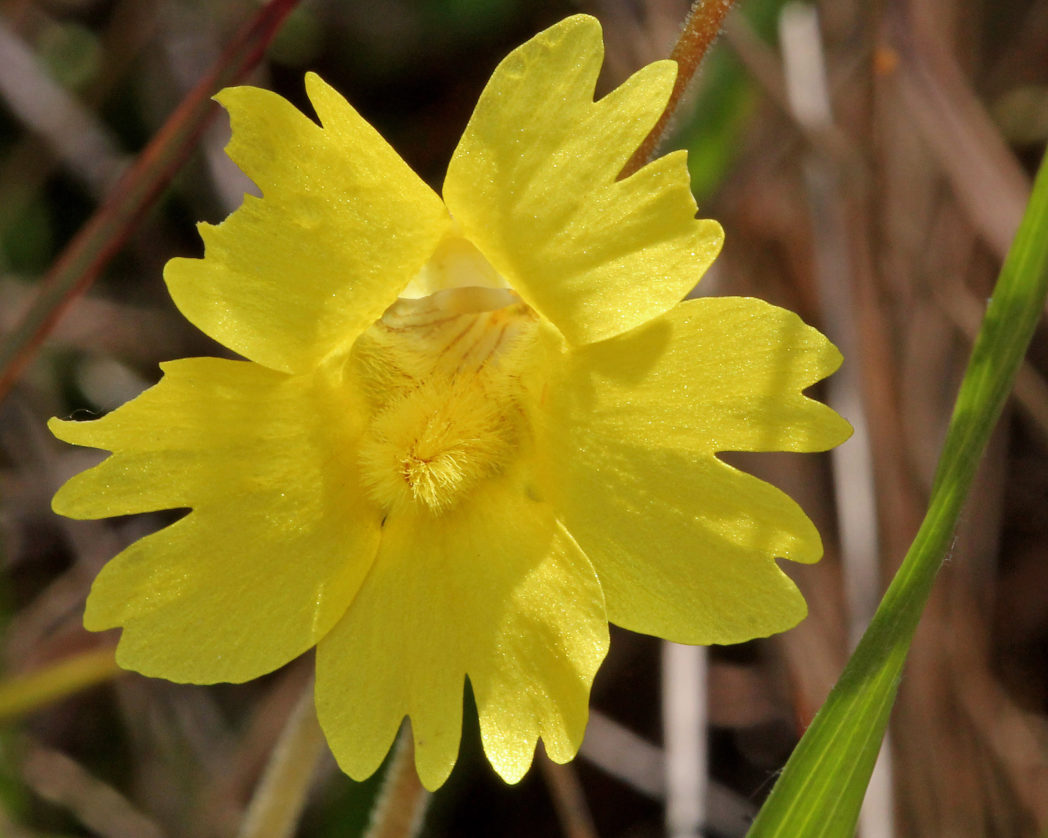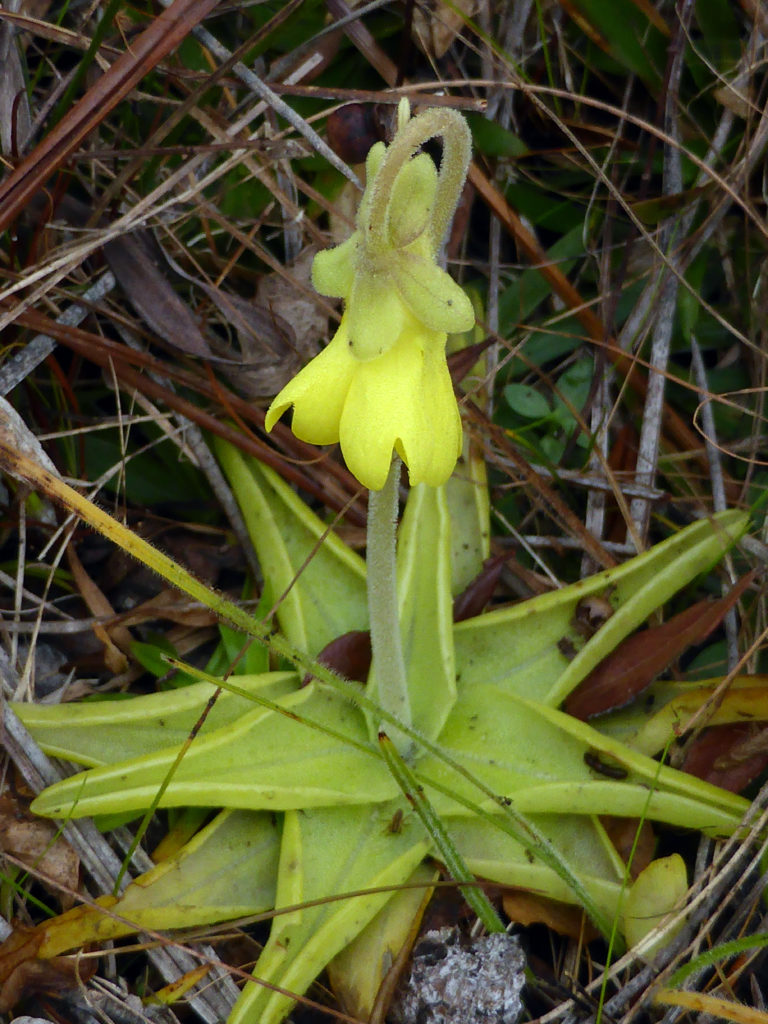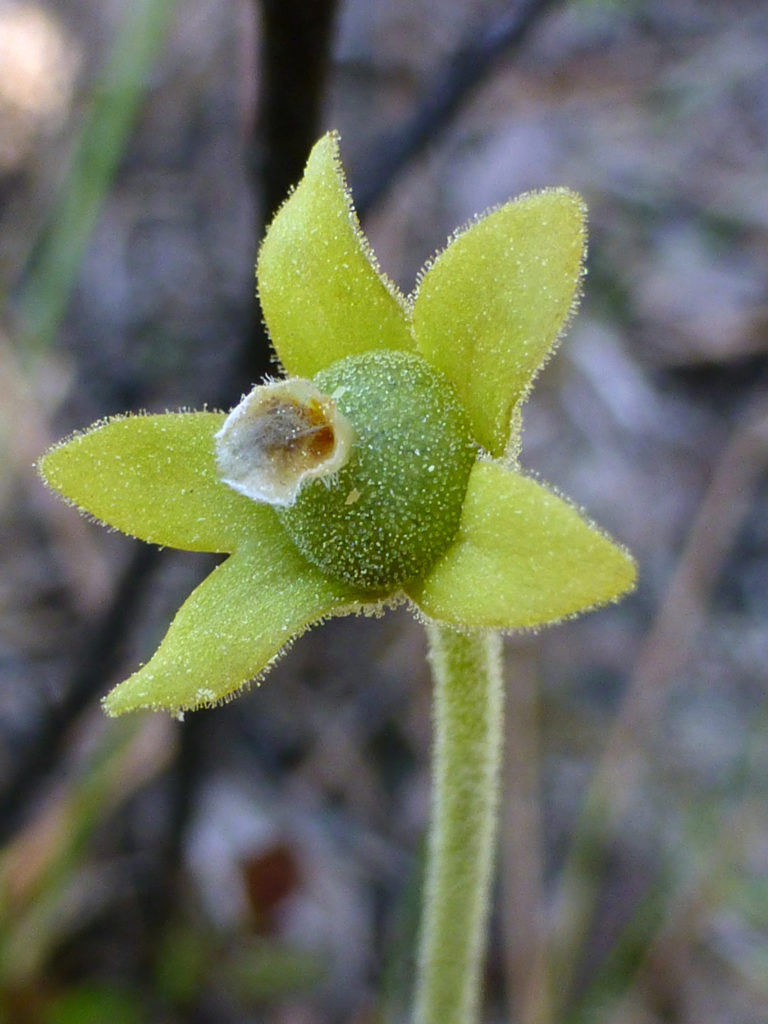Yellow butterwort
Pictured above: Yellow butterwort (Pinguicula lutea) by Mary Keim. Click on terms for botanical definitions. View post as a PDF.
Yellow butterwort (Pinguicula lutea) is a perennial carnivorous plant. Its solitary bloom can be bright or pale yellow and has five irregular, notched petals. The bloom sits atop an upright, leafless stalk that arises from a basal rosette of succulent yellowish-green leaves. The stalk, sepals and leaves are covered in tiny hairs. The hairs on the leaf surface secrete a sticky mucilage in which insects become trapped. (Insects often mistake the mucilage for drops of water.) Enzymes are then secreted to help the plant digest the insects. The leaves have pointed tips and entire margins that curl up during digestion and relax once digestion is complete. The ability to trap and digest insects allows yellow butterwort (like most carnivorous plants) to survive in nutrient-deficient conditions. Subsequently, it helps prevent insect predation.
Yellow butterwort blooms late winter into spring. It occurs naturally in wet pine flatwoods, wet prairies and seepage slopes. It prefers a drier environment compared with other native Pinguicula. It a state-listed threatened species.
The genus name, Pinguicula, comes from the Latin pinguis, which means “fat” and alludes to the greasy feeling of the leaf surface. The species epithet, lutea, comes from the Latin luteus, or “yellow.”
Family: Lentibulariaceae (Bladderwort family)
Native range: Mostly throughout Florida
To see where natural populations of Yellow butterwort have been vouchered, visit www.florida.plantatlas.usf.edu.
Hardiness: Zones 10B–8A
Lifespan: Perennial
Soil: Moist, acidic soils with poor nutrients
Exposure: Full sun
Growth habit: 1+’
Propagation: Seed
Yellow butterwort is not commercially available. Visit a natural area to see it.
For information on other Pinguicula species, see:



